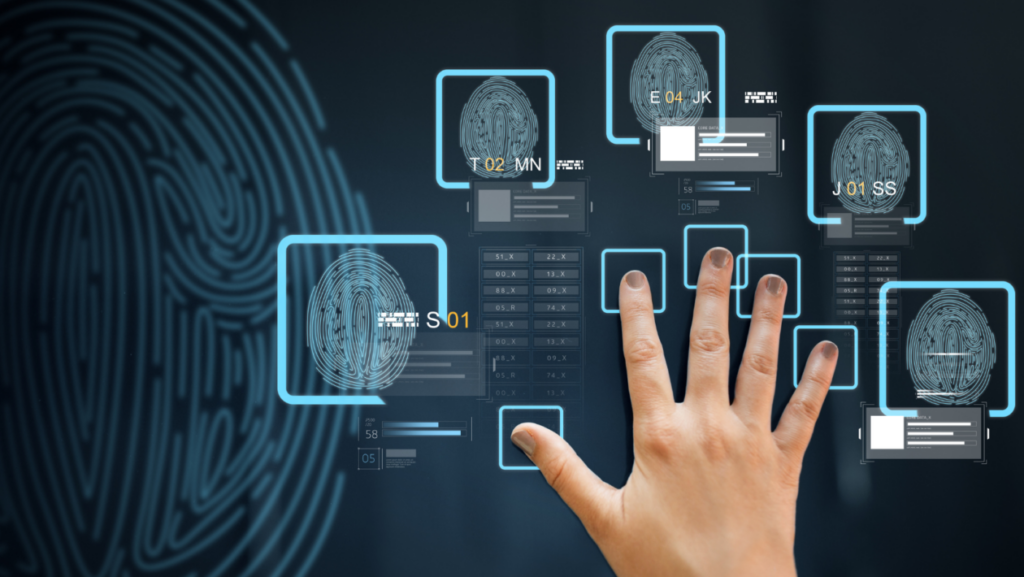Blockchain technology’s unique characteristics, such as its immutability, transparency, and decentralization, have spurred revolutionary changes across a wide range of businesses. Digital identity management is poised for major disruption due to its growing reliance on digital platforms for personal and professional interactions.
For example, blockchain-based digital identification solutions are a strong contender for replacing conventional identity management systems in the market today. By leveraging blockchain’s decentralized nature, these solutions provide safe and impenetrable identity verification and storage. This innovative approach actively reduces cybercrimes like fraud and identity theft connected to centralized identification data.
Digital identity management using blockchain technology solves present issues and establishes the groundwork for future advancements in online transaction security and resilience. Blockchain software development becomes a critical enabler of safe, cutting-edge digital identity solutions for companies entering this revolutionary market.
What is a Blockchain-Based Digital Identity System?
Blockchain technology is used by a blockchain-based digital identity system to safely and openly store and validate people’s identity data. It improves the security and privacy of digital identities by utilizing blockchain technology’s decentralized and impenetrable features. The identification information of every user is kept in a decentralized network and is only available with cryptographic keys.
This method lowers the possibility of fraud and identity theft by reducing reliance on centralized authorities. Smart contracts guarantee user permission and control over their personal information by enabling safe and effective identity verification procedures. Blockchain-based digital identification solutions address issues with traditional identity management by providing a robust and private-preserving solution.

Steps to Build a Blockchain-Based Digital Identity System
Building a blockchain-based digital identity system involves careful planning and strategic execution. Here are the basic steps to develop one:
Define Objectives and Scope
Clearly state the objectives of the digital identification system and delineate its scope, including the categories of identity data that need to be tracked down and validated. This first stage lays the groundwork for the entire development process.
Choose the Proper Blockchain Platform
Based on the project’s needs, select an appropriate blockchain platform (such as Ethereum or Hyperledger), considering scalability and smart contract capabilities. The platform of choice ought to be in line with the unique requirements of the digital identity system.
Design Data Architecture
Create a data architecture that outlines the organization and storage of identification data on the blockchain, utilizing hashing and encryption algorithms to improve security. Careful data architecture is essential for identification information to be managed effectively and securely.
Decentralized Identity Management
A decentralized identity management system must be created to lessen dependency on central authorities. Increase security by using cryptographic keys and unique identifiers to give people greater data control.
Smart Contracts for Identity Verification
Create smart contracts that simplify the verification procedure. Implement safe and private verification procedures to ensure the smart contracts work smoothly and correctly to verify users’ identities.

User Consent and Control
Put in place procedures that let people manage their personal data. Provide consent management tools that protect users’ privacy and give them control over when and how their data is shared and accessed.
Integration With External Systems
Establish interfaces to allow for easy integration with databases and identification systems that are already in place. Assure compatibility and seamless data flow by ensuring interoperability with other blockchain networks and conventional systems.
Put Privacy Measures in Place
Use privacy-enhancing technology to safeguard sensitive identification data, such as homomorphic encryption or zero-knowledge proofs. Aim to adhere to data protection laws and guidelines at every stage of the development process.
Security Testing and Audits
To find and fix vulnerabilities, do comprehensive security audits. In order to guarantee the durability of the digital identity system against potential risks and attacks, conduct thorough testing, including penetration testing.
User Education and Adoption
Create instructional resources to assist users in comprehending the features and advantages of the identity system that runs on blockchain technology. Provide user-friendly interfaces to ensure a favorable user experience and promote widespread adoption.
Regulatory Compliance
Keep yourself up to date on all applicable laws and requirements for compliance with the digital identity system. Include elements that make it easier to follow regulations, giving you a system that complies with legal requirements.
Continuous Improvement
Iterate on the system regularly and create a feedback loop for user input to promote ongoing improvement. Stay up to date with altering user demands and technology standards to make sure the blockchain-based digital identification system is flexible, user-focused, and current.
In a Nutshell
Embraced by the potential of blockchain technology, the future of digital identity management unfolds with a promising and bright outlook. This cutting-edge strategy is expected to continue to grow and evolve, and it will become more and more important for companies and organizations looking for effective and safe identity management solutions.
Blockchain, as an advanced technology, is set to firmly establish itself as a vital component of the identity management toolset. As the need for increased security and privacy grows, the blockchain technology will provide the resilience and transparency required to meet the changing demands of the digital age.
Take the next step towards revolutionizing your identity management system with our expert tokenomics and smart contracts consulting services.
Empower your business with the security, transparency, and decentralization offered by blockchain technology. Our team specializes in designing and implementing blockchain-based digital identity solutions tailored to your specific needs.
With our guidance, you can navigate the complexities of building a robust blockchain-based digital identity system seamlessly. From defining objectives to ensuring regulatory compliance, we provide comprehensive support at every stage of development. Let us help you unlock the full potential of blockchain technology for secure and efficient digital identity management.
Contact us today to embark on your journey towards a safer and more resilient digital future. Together, we can shape the next generation of identity management solutions powered by blockchain technology. Don’t miss out on this opportunity to stay ahead of the curve and elevate your business to new heights.

